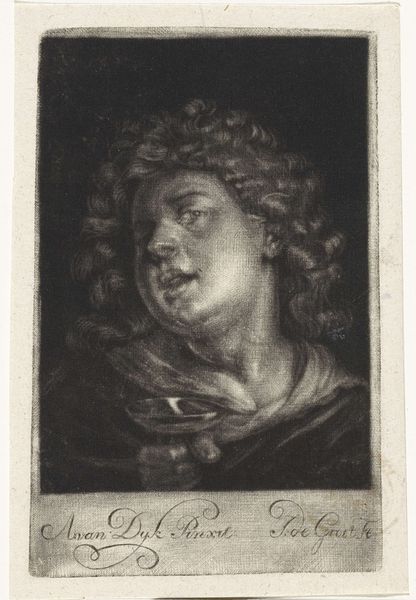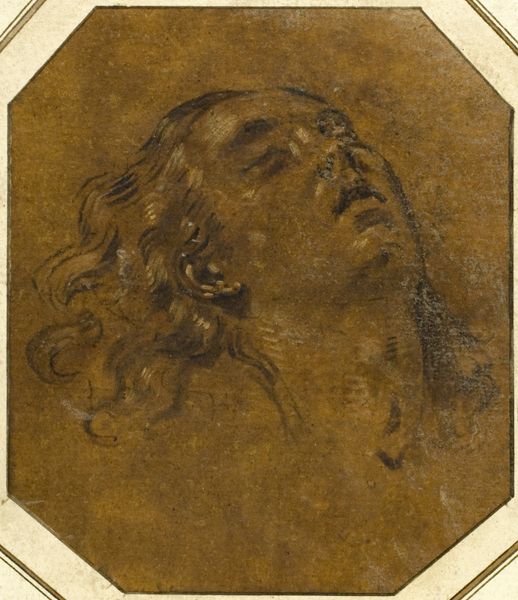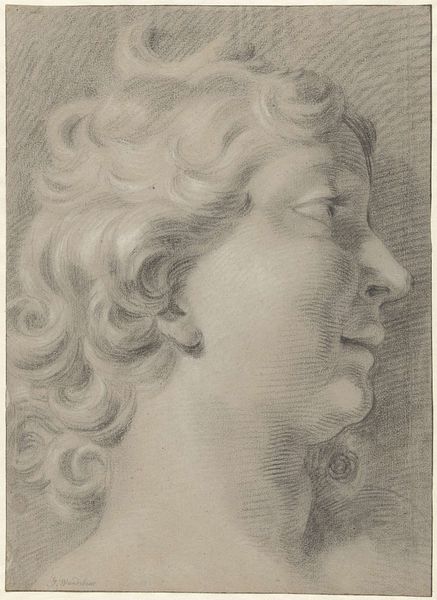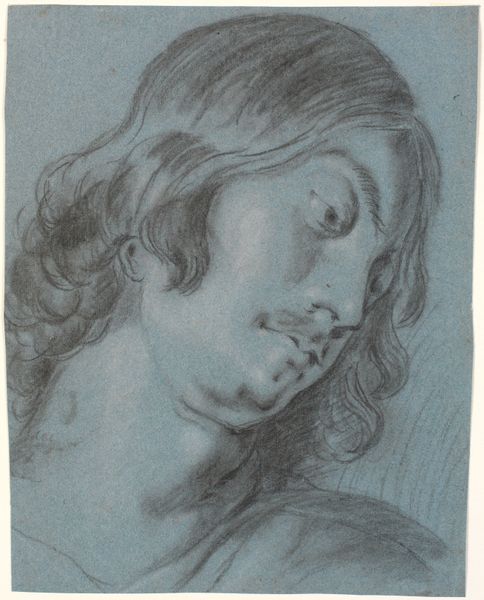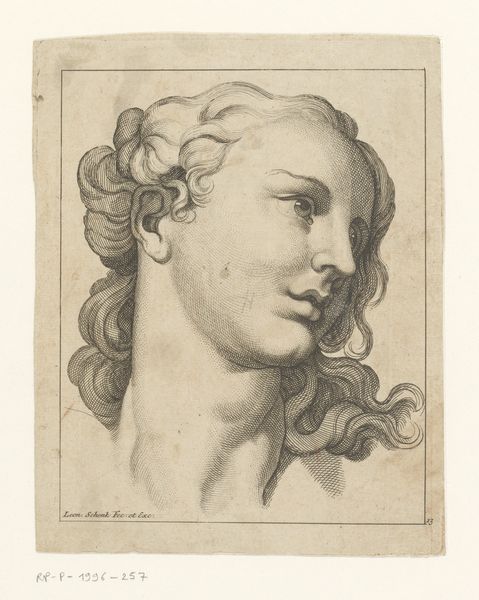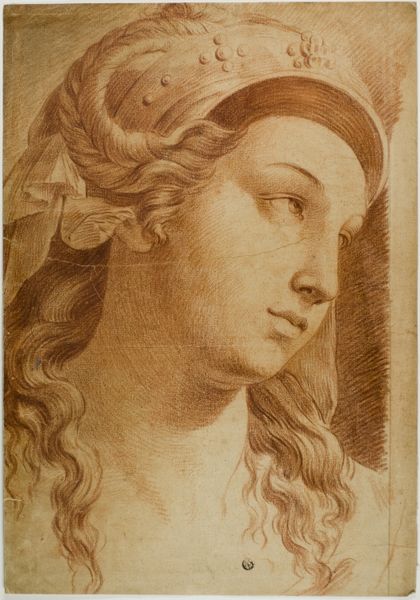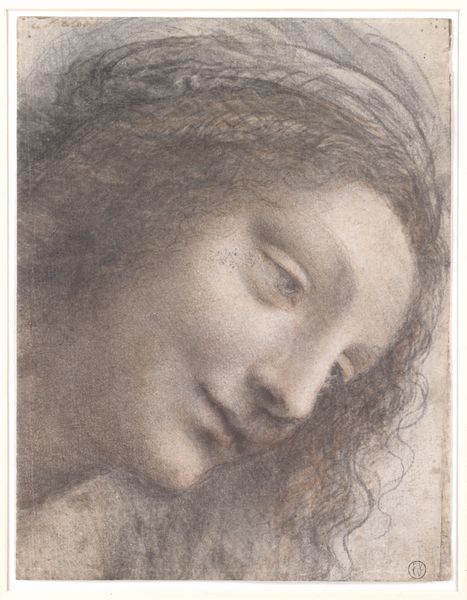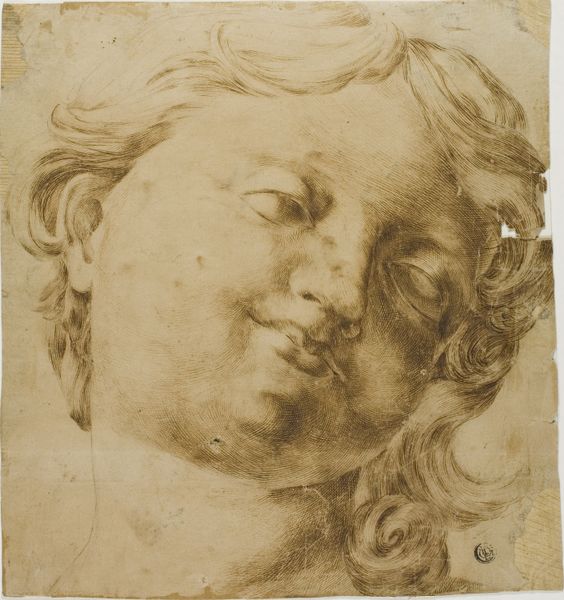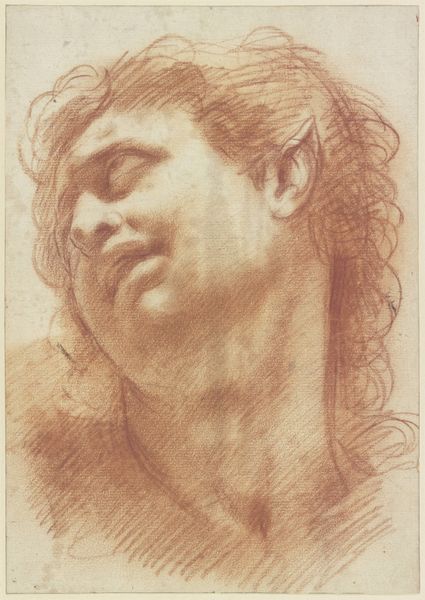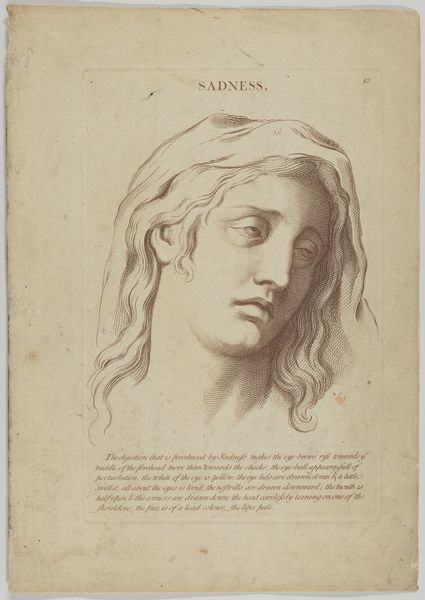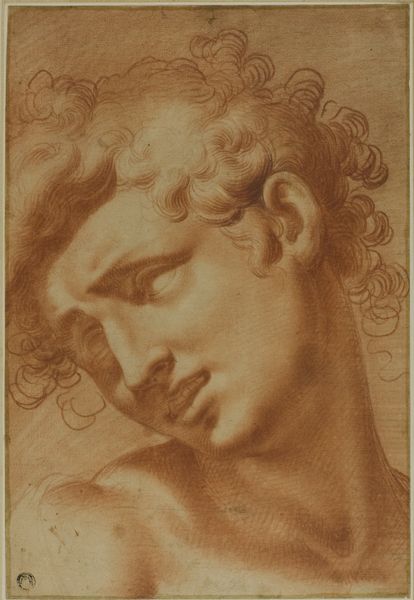
Head of a young man looking upwards; after Giovanni Battista Piazzetta 1774
0:00
0:00
Dimensions: Sheet (Trimmed): 16 1/2 × 12 3/8 in. (41.9 × 31.4 cm)
Copyright: Public Domain
Editor: This is "Head of a young man looking upwards; after Giovanni Battista Piazzetta," a 1774 print by Teodoro Viero, currently residing at the Metropolitan Museum of Art. The upward gaze creates a really interesting dynamic. What do you see in this piece, particularly regarding how that gaze affects its overall symbolism? Curator: The upward gaze is potent. In Viero's time, heavily codified gestures spoke volumes to the viewer. The act of looking up could symbolize divine inspiration, aspiration, or even submission to a higher power. Consider the history of religious art. Editor: So, it’s tapping into that existing visual language? Curator: Exactly! But what happens when you pull that gesture out of an explicitly religious context, as Viero does here, after Piazzetta? Does it change its significance? Think about how cultural memory and visual symbolism intertwine. Editor: Maybe it becomes more about personal introspection, a searching for meaning within oneself, as opposed to looking to an external source? Curator: Precisely. And note how Viero uses line to suggest the model's youth and idealism, especially in contrast to his somber expression. What does this juxtaposition tell us? Editor: That even in youth, there's an awareness of something beyond the immediate. It feels less naive and more thoughtful. I hadn't considered how that tension plays into it. Curator: Seeing how visual elements—like a simple upward glance—can hold and evolve cultural meaning gives us a deeper insight into art. Editor: Definitely, I’ll never look at an upward glance the same way again! It's incredible how much historical weight a single gesture can carry.
Comments
No comments
Be the first to comment and join the conversation on the ultimate creative platform.

